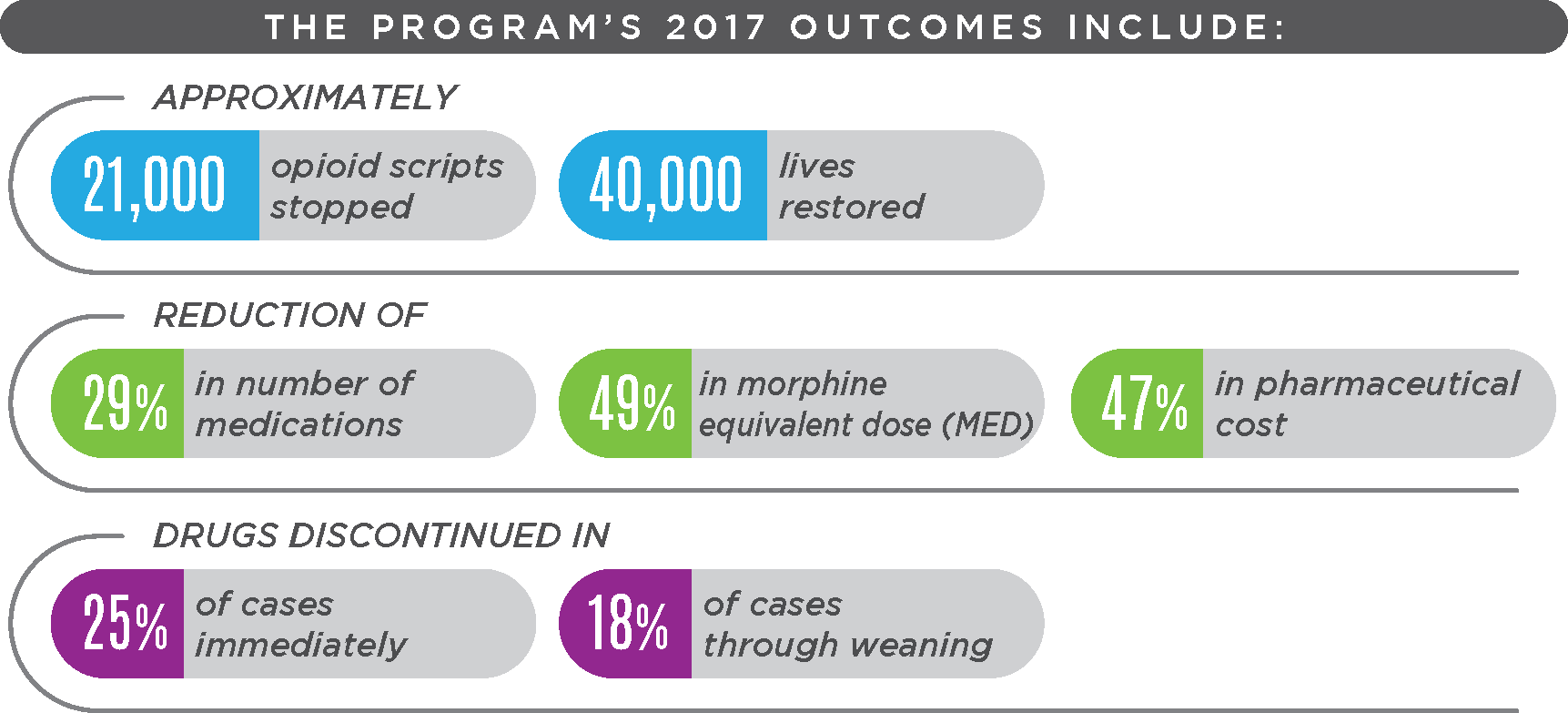
In late 2011, a team of claims management and managed care leaders at Sedgwick met to identify how they could address the troubling rise in opioid prescriptions and morphine equivalent dosage (MED). What followed was the development of a team of doctors, pharmacists and specially trained nurses engaged to educate prescribers and patients and to formulate weaning plans and identify alternative therapies for cases with adverse drug trends.
Through the efforts of this team, we have seen falling drug utilization, MED and cost and the development of increased drug safety awareness, guidelines implementation and education for prescribers and patients. Last year, the team’s passionate work achieved excellent results.

This month, Sedgwick’s pharmacy management team celebrated another great milestone: the one millionth mark of lower MED across our book of business.
We calculate the lower MED as difference between the sum total MED at the start of our complex pharmacy management intervention compared to the total MED amount at the time of CPM closure. For example, 100 MED at CPM intervention date and 50 at CPM closure date would be a 50% reduction.
What this means for Sedgwick and our clients is that we have safer homes, neighborhoods and patients. Prescribers are more informed about the total health picture of their patients and are not as likely to prescribe without thinking about the patient’s total health situation. Now that we have reined in prescriber practices, we are focusing on people’s perception of pain. It is important to educate injured workers about pain expectations and non-drug pain management therapies at claim inception and especially before a major medical procedure like surgery. It is also important to open avenues to drug alternative treatments such as acupuncture, mindfulness, meditation and physical therapy.
It is highly critical for payers to have reliable methods for identifying and intervening when high levels of MED are prescribed. Payers should consult with experienced physicians and pharmacists to set goals and length of time indicators for intervention. The goals are intended to decrease pain and improve function and quality of life.
It is highly critical to systematically cast the appropriate drug safety net because many prescribers are still susceptible to dangerous prescribing practices.